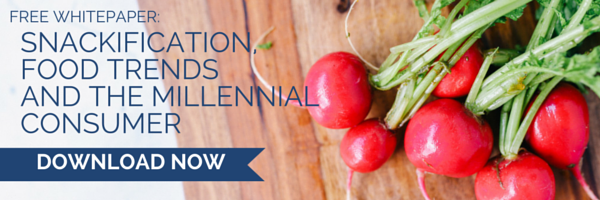
Every so often, a food fad will take hold of grocery shoppers. Whether it's low-fat, low-carb, paleo, gluten-free or some other idea, people will suddenly decide that it's necessary for health or weight loss, and many brands will eagerly pursue this new market, churning out niche products to fill these new demands. While no one can doubt the short-term success of catering to fads, it’s less certain that it can be sustainable as a long-term strategy.
Recent Food Fads
Back in the nineties, many dieters were convinced that a low-fat diet was the weight loss answer they needed, and supermarkets were soon flooded with low-fat versions of many popular foods. But these foods fell out of favor when nutritionists started commenting on their unhealthy qualities. Low-fat cookies, for instance, were packed with sugar and contained as much as 50 calories per cookie. Other companies opted for partially hydrogenated oils in low-fat products, which we now know is dangerous for heart health.
In the early 2000s, carbohydrates started to get a bad rap. And the cycle began again. Companies made low-carb versions of popular foods and enjoyed success until a new food enemy appeared: Gluten.
Gluten-free is currently big business. A recent report from Mintel values the gluten-free market in the US at over $9 billion per year, but gluten-free is already on the wane. References to gluten and gluten-free have dropped significantly on social media since last year, and many articles are being written in mainstream media about the problems with avoiding gluten. The backlash has been swift and decisive and brand reputations can take a hit. When companies create a product to fill a niche, they benefit from a boost in sales for a time, but every fad eventually fades away. By tying your brand too closely to a short-lived niche, you take the risk of hurting your brand's reputation in the long run.
A Smarter Approach
Jumping on every fad can be expensive for brands. The cost of researching and developing products to fit a current niche can wind up being unprofitable if the fad fizzles out too quickly. And, your brand can wind up seeming out of touch or even untrustworthy when the food fad goes out of style. The short term profits are not worth the potential damage to your relationship with grocery shoppers.
Instead, when you are considering expanding into a popular, new area, think long-term. Is a current trend easily adapted or based on something that will be long-lasting? For instance, many brands have found increased success by adding exotic flavors to an already popular product line. This is a trend that is likely to be long-lasting because it is based on cultural and demographic changes—growing populations of Asian and Hispanic Americans or Millennials’ increased interest in travel and other cultures, for example. Brands that are going into areas like sous vide are also likely to see sustained success because the technology is flexible and can continue to please consumers' palates even as tastes change.
It's also important to make sure that a trend fits your brand image before jumping on board. You invest enormous amounts of research, time and money in creating a trustworthy and familiar brand. Damage to your brand through a poor match or a niche that quickly falls out of favor can extend to all of your products and depress sales for an extended time.
By always carefully considering the possible future of a food niche and the fit with your overall branding, you can make better decisions about new products. Over time, this results in a far more successful portfolio of products. And, it will also result in a better, more sustainable relationship with consumers. And this leads to a better chance of your products showing up in grocery shoppers' carts.







